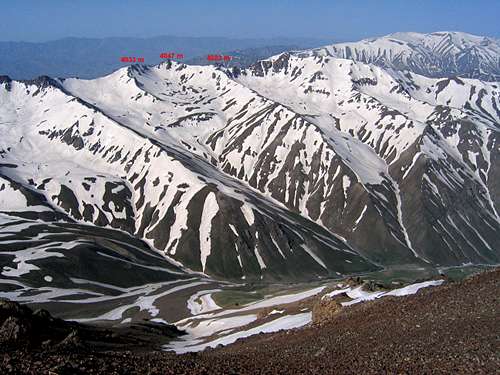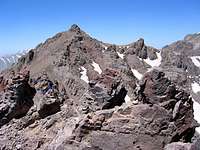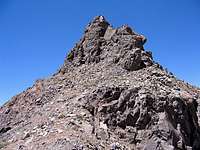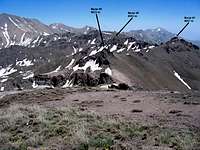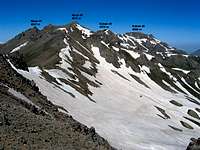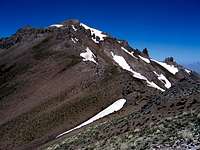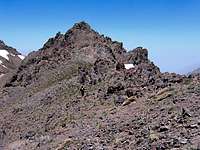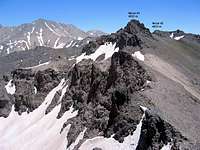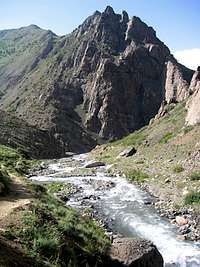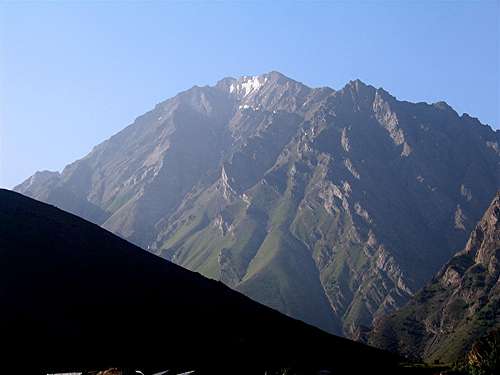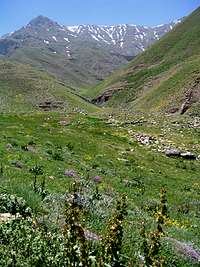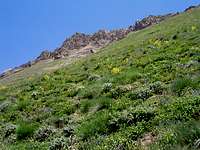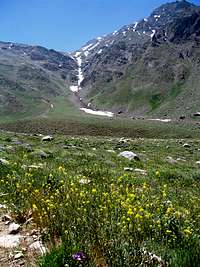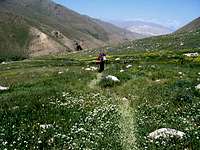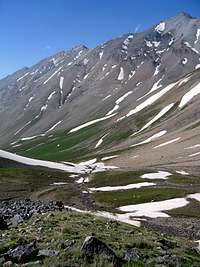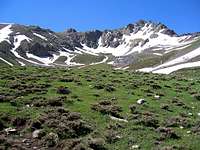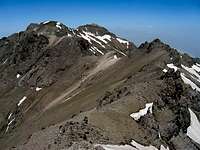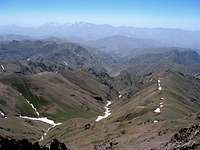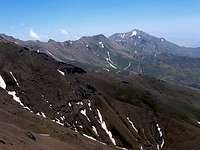|
|
Mountain/Rock |
|---|---|
|
|
36.32846°N / 50.92231°E |
|
|
Mountaineering |
|
|
Summer |
|
|
13278 ft / 4047 m |
|
|
Overview
Click for Introduction to the Central Alborz Mountains.Click to see the Map of the Takhte Soleyman Massif.
My GPS measured an elevation of 4058 m. The 4047 m figure is per the Iranian 1:50 000 map.
The southwestern arm of the Takhte Soleyman Massif consists of a ridgeline that starts on the western flank of the Gardooneh Kooh Peak and first heads west, then turns northwest. This ridgeline gives rise to many high points with elevations in the 4000-4078 m range. The high points can be divided into three different groups with each group constituting a separate peak. East to west, the peaks are as follows:
1) Meeshchalak 4067 m
2) Nezar 4047 m
3) Kalvan 4078 m
Nezar sits between the Meeshchalak & Kalvan Peaks and is made of three high points itself. These include: Point 4047 m, Point 4033 m & Point 4023 m.
The northern slopes of the Nezar Peaks create a number of alpine bowls that sit at elevations of 3700 to 3850 m and house large snow fields. The bowls form the headwaters of the Sehezar River. As the river heads north, it steadily loses elevation until it reaches the Caspian Sea. On a straight line, the distance between the summit of Nezar and the Caspian Sea is approximately 50 Km.
To the east, Nezar is connected to the 4067 m Meeshchalak Peak and to the west Nezar is connected to the 4078 m Kalvan Peak. The southern slopes of Nezar go down to reach a branch of the Shah Rood (Taleghan) River.
Nezar is a very long way from any trailhead. Reaching its summit requires a multi-day hiking program. Usual approaches are:
1) From the east via the summit of Gardooneh Kooh (starting at the village of Roodbarak)
2) From the south via the village of Parachan in the Taleghan Valley
3) From the north via the Sehezar River Valley (See Route Information below)
The Sehezar Valley approach is of particular interest because it takes the hiker from just below Sea level on the Caspian Coast all the way to above 4000 m.
Nezar #1, 4047 m:
Nezar #2, 4033 m:
Nezar #3, 4023 m:
Below you will see pictures from the Sehezar Valley. For more pictures see the pages for Kalvan and Meeshchalak Peaks.
Sehezar Valley Below 2000 m:
Caspian Forests cover the slopes below 2000 m
Sehezar Valley 2000-2500 m:
Sehezar Valley 2500-3500 m:
Sehezar Valley Above 3500 m:
Views From the Summit of Nezar #1:


